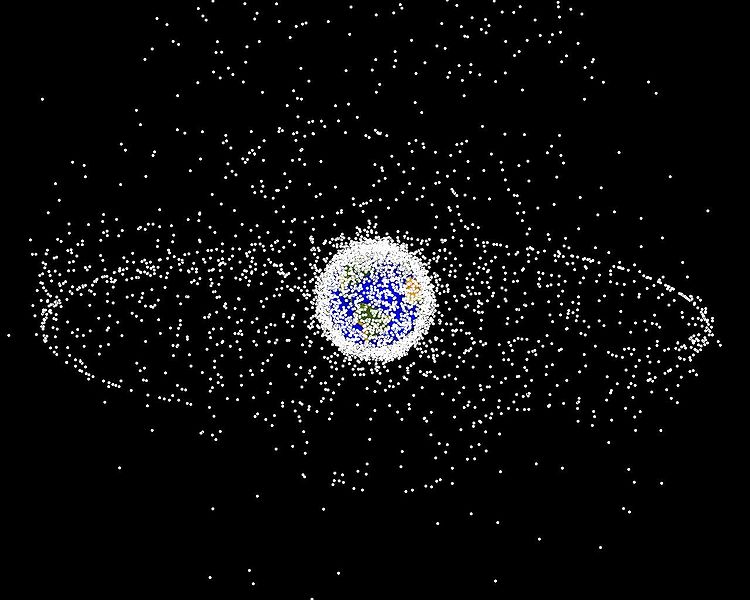Science News
More Space Junk

Discovery News has an article today about the Space Based Space Surveillance (SBSS), a mission by the Air Force “to get better information about the 20,000 or so objects whizzing around the planet.”
Most of these objects are “space junk” (see our May 14th posting “Heavy Traffic”); or as Wired Magazine puts it in a recent article:
…1,000 active satellites, 3,700 inactive satellites and rocket pieces, and another 15,300 objects the size of a fist or larger... And that’s ignoring the danger posed by the estimated half-million smaller pieces of debris the size of a marble or larger. Too small to track from the ground, each of those tiny projectiles is capable of severely damaging a satellite.
Orbiting space junk can pose a great danger – it can collide with the International Space Station and other active satellites, or even fall to the earth.
Roughly once a day, an object in the official US catalog of debris drops out of orbit and turns to ash on reentry. Once a week or so, an object that’s too big or dense will survive reentry and plunge to Earth, but it typically plops down unnoticed in an ocean or some unpopulated expanse. (There are exceptions: An upper rocket stage once landed in the desert of Saudi Arabia, to the surprise of local shepherds, and in 1997, a steel fuel tank slammed into a yard in Texas.)
The US Space Surveillance Network acts as something of a space-traffic controller, but SBSS will launch a satellite next month that will, according to Discovery:
supplement ground-based radars and telescopes that currently keep track of objects orbiting Earth. The space-based system, however, will not be subject to weather, lighting and other restrictions faced by ground systems.
Wired reports that last December there was the first-ever International Conference on Orbital Debris Removal to address space junk and how to get rid of it. They quote one participant:
“This reminds me of Boy Scouts, with their motto ‘Leave no trace,’” said Patrick Moran, an engineer with California-based Aerospace Corporation. “The same rigor must now be imposed on space.”
Some potentially feasible ideas came out of the conference, including large satellites with lightweight nets and one called the Rustler. Unfortunately, all of the programs cost in the tens of millions to hundreds of millions of dollars.
But even though NASA’s funding has been cut, Wired mentions that:
included in NASA’s proposed 2011 budget is a first-ever provision to award $400,000 research grants for orbital debris removal and other projects. The allocation would be part of a new “mission directorate” called Space Technology, funded to the tune of almost $5 billion over the next five years.